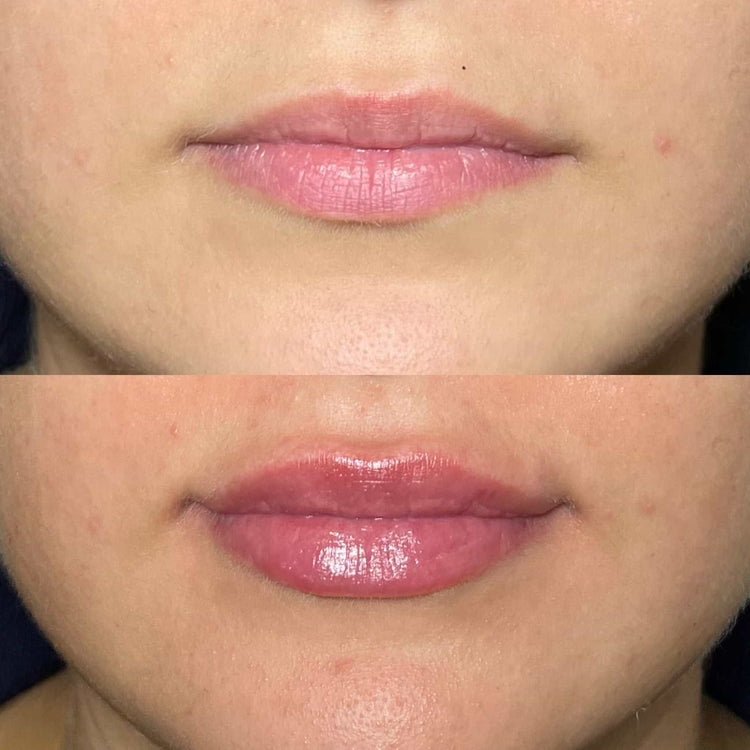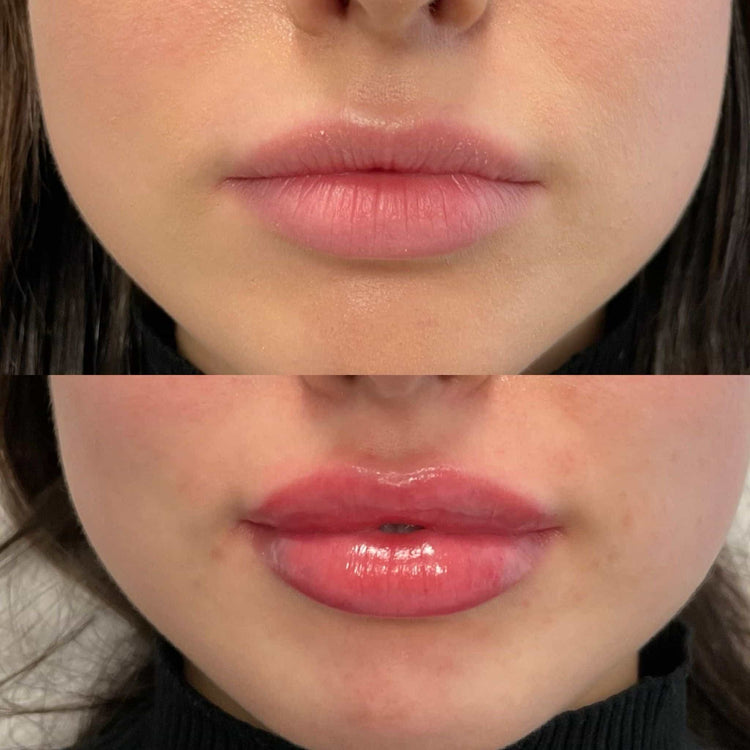Dermal Fillers for Under-Eye Hollows
Under-eye hollows can contribute to an aged appearance, making one look tired and worn out. Fortunately, dermal fillers offer a safe and effective solution to restore volume and diminish these shadows.
Types of Fillers Used
Dermal fillers are injectible substances that plump up the skin and reduce the appearance of wrinkles, folds, and depressions. In the case of under-eye hollows, they effectively add volume to the area beneath the eyes, smoothing out the contour and minimizing the shadowing effect.
There are several types of dermal fillers suitable for treating under-eye hollows. Hyaluronic acid fillers, such as Restylane, Juvederm, and Belotero, are commonly used due to their ability to attract and retain moisture, hydrating the skin and providing a natural-looking plumping effect. These fillers also offer temporary results, typically lasting six to eighteen months.
Calcium hydroxylapatite fillers, like Radiesse, are another option for treating under-eye hollows. Unlike hyaluronic acid fillers, these contain microspheres that stimulate collagen production, leading to longer-lasting results, which can last up to a year or more.
Procedure
The procedure involves injecting the filler directly into the under-eye area using a fine needle. A topical anesthetic may be applied beforehand to minimize discomfort. The injection process is relatively quick, typically taking only 15 to 30 minutes.
After the procedure, there may be some mild swelling, bruising, or redness around the injection sites. These side effects are usually temporary and subside within a few days.
It’s essential to consult with a qualified and experienced injector to determine the most suitable type of dermal filler and dosage for your individual needs and concerns.
Benefits
Dermal fillers offer numerous benefits for addressing under-eye hollows, leading to a more refreshed and youthful appearance. By adding volume to the area beneath the eyes, fillers effectively minimize the shadowing effect that contributes to a tired look.
Fillers can also smooth out wrinkles and fine lines around the eyes, further enhancing the overall aesthetic outcome. The use of hyaluronic acid fillers, known for their hydrating properties, can improve skin texture and plumpness in the under-eye region.
With various types of dermal fillers available, individuals can choose the option that best suits their needs and desired duration of results.
Reduced Appearance of Dark Circles
Under-eye hollows can contribute to an aged appearance, making one look tired and worn out. Fortunately, dermal fillers offer a safe and effective solution to restore volume and diminish these shadows.
Dermal fillers are injectible substances that plump up the skin and reduce the appearance of wrinkles, folds, and depressions. In the case of under-eye hollows, they effectively add volume to the area beneath the eyes, smoothing out the contour and minimizing the shadowing effect.
There are several types of dermal fillers suitable for treating under-eye hollows. Hyaluronic acid fillers, such as Restylane, Juvederm, and Belotero, are commonly used due to their ability to attract and retain moisture, hydrating the skin and providing a natural-looking plumping effect. These fillers also offer temporary results, typically lasting six to eighteen months.
Calcium hydroxylapatite fillers, like Radiesse, are another option for treating under-eye hollows. Unlike hyaluronic acid fillers, these contain microspheres that stimulate collagen production, leading to longer-lasting results, which can last up to a year or more.
The procedure involves injecting the filler directly into the under-eye area using a fine needle. A topical anesthetic may be applied beforehand to minimize discomfort. The injection process is relatively quick, typically taking only 15 to 30 minutes.
After the procedure, there may be some mild swelling, bruising, or redness around the injection sites. These side effects are usually temporary and subside within a few days.
It’s essential to consult with a qualified and experienced injector to determine the most suitable type of dermal filler and dosage for your individual needs and concerns.
Dermal fillers offer numerous benefits for addressing under-eye hollows, leading to a more refreshed and youthful appearance. By adding volume to the area beneath the eyes, fillers effectively minimize the shadowing effect that contributes to a tired look.
Fillers can also smooth out wrinkles and fine lines around the eyes, further enhancing the overall aesthetic outcome. The use of hyaluronic acid fillers, known for their hydrating properties, can improve skin texture and plumpness in the under-eye region.
With various types of dermal fillers available, individuals can choose the option that best suits their needs and desired duration of results.
Improved Facial Volume
Under-eye hollows can contribute to an aged appearance, making one look tired and worn out. Fortunately, dermal fillers offer a safe and effective solution to restore volume and diminish these shadows.
Dermal fillers are injectable substances that plump up the skin and reduce the appearance of wrinkles, folds, and depressions. In the case of under-eye hollows, they effectively add volume to the area beneath the eyes, smoothing out the contour and minimizing the shadowing effect.
There are several types of dermal fillers suitable for treating under-eye hollows. Hyaluronic acid fillers, such as Restylane, Juvederm, and Belotero, are commonly used due to their ability to attract and retain moisture, hydrating the skin and providing a natural-looking plumping effect. These fillers also offer temporary results, typically lasting six to eighteen months.
Calcium hydroxylapatite fillers, like Radiesse, are another option for treating under-eye hollows. Unlike hyaluronic acid fillers, these contain microspheres that stimulate collagen production, leading to longer-lasting results, which can last up to a year or more.
The procedure involves injecting the filler directly into the under-eye area using a fine needle. A topical anesthetic may be applied beforehand to minimize discomfort. The injection process is relatively quick, typically taking only 15 to 30 minutes.
After the procedure, there may be some mild swelling, bruising, or redness around the injection sites. These side effects are usually temporary and subside within a few days.
It’s essential to consult with a qualified and experienced injector to determine the most suitable type of dermal filler and dosage for your individual needs and concerns.
Dermal fillers offer numerous benefits for addressing under-eye hollows, leading to a more refreshed and youthful appearance. By adding volume to the area beneath the eyes, fillers effectively minimize the shadowing effect that contributes to a tired look.
Fillers can also smooth out wrinkles and fine lines around the eyes, further enhancing the overall aesthetic outcome. The use of hyaluronic acid fillers, known for their hydrating properties, can improve skin texture and plumpness in the under-eye region.

With various types of dermal fillers available, individuals can choose the option that best suits their needs and desired duration of results.
Enhanced Skin Texture
Under-eye hollows can contribute to an aged appearance, making one look tired and worn out. Fortunately, dermal fillers offer a safe and effective solution to restore volume and diminish these shadows. Dermal fillers are injectable substances that plump up the skin and reduce the appearance of wrinkles, folds, and depressions. In the case of under-eye hollows, they effectively add volume to the area beneath the eyes, smoothing out the contour and minimizing the shadowing effect.
There are several types of dermal fillers suitable for treating under-eye hollows. Hyaluronic acid fillers, such as Restylane, Juvederm, and Belotero, are commonly used due to their ability to attract and retain moisture, hydrating the skin and providing a natural-looking plumping effect. These fillers also offer temporary results, typically lasting six to eighteen months. Calcium hydroxylapatite fillers, like Radiesse, are another option for treating under-eye hollows. Unlike hyaluronic acid fillers, these contain microspheres that stimulate collagen production, leading to longer-lasting results, which can last up to a year or more.
The procedure involves injecting the filler directly into the under-eye area using a fine needle. A topical anesthetic may be applied beforehand to minimize discomfort. The injection process is relatively quick, typically taking only 15 to 30 minutes. After the procedure, there may be some mild swelling, bruising, or redness around the injection sites. These side effects are usually temporary and subside within a few days.
It’s essential to consult with a qualified and experienced injector to determine the most suitable type of dermal filler and dosage for your individual needs and concerns.
Dermal fillers offer numerous benefits for addressing under-eye hollows, leading to a more refreshed and youthful appearance. By adding volume to the area beneath the eyes, fillers effectively minimize the shadowing effect that contributes to a tired look. Fillers can also smooth out wrinkles and fine lines around the eyes, further enhancing the overall aesthetic outcome. The use of hyaluronic acid fillers, known for their hydrating properties, can improve skin texture and plumpness in the under-eye region.
With various types of dermal fillers available, individuals can choose the option that best suits their needs and desired duration of results.
Risks and Side Effects
Under-eye hollows can contribute to an aged appearance, making one look tired and worn out. Fortunately, dermal fillers offer a safe and effective solution to restore volume and diminish these shadows.
Dermal fillers are injectable substances that plump up the skin and reduce the appearance of wrinkles, folds, and depressions. In the case of under-eye hollows, they effectively add volume to the area beneath the eyes, smoothing out the contour and minimizing the shadowing effect.
There are several types of dermal fillers suitable for treating under-eye hollows. Hyaluronic acid fillers, such as Restylane, Juvederm, and Belotero, are commonly used due to their ability to attract and retain moisture, hydrating the skin and providing a natural-looking plumping effect. These fillers also offer temporary results, typically lasting six to eighteen months.
Calcium hydroxylapatite fillers, like Radiesse, are another option for treating under-eye hollows. Unlike hyaluronic acid fillers, these contain microspheres that stimulate collagen production, leading to longer-lasting results, which can last up to a year or more.
The procedure involves injecting the filler directly into the under-eye area using a fine needle. A topical anesthetic may be applied beforehand to minimize discomfort. The injection process is relatively quick, typically taking only 15 to 30 minutes.
After the procedure, there may be some mild swelling, bruising, or redness around the injection sites. These side effects are usually temporary and subside within a few days.

It’s essential to consult with a qualified and experienced injector to determine the most suitable type of dermal filler and dosage for your individual needs and concerns. Potential risks and side effects of dermal fillers include infection, allergic reactions, and uneven or unnatural-looking results.
Dermal fillers offer numerous benefits for addressing under-eye hollows, leading to a more refreshed and youthful appearance. By adding volume to the area beneath the eyes, fillers effectively minimize the shadowing effect that contributes to a tired look. Fillers can also smooth out wrinkles and fine lines around the eyes, further enhancing the overall aesthetic outcome. The use of hyaluronic acid fillers, known for their hydrating properties, can improve skin texture and plumpness in the under-eye region.
With various types of dermal fillers available, individuals can choose the option that best suits their needs and desired duration of results.
Recovery
Under-eye hollows can contribute to an aged appearance, making one look tired and worn out. Fortunately, dermal fillers offer a safe and effective solution to restore volume and diminish these shadows. Dermal fillers are injectable substances that plump up the skin and reduce the appearance of wrinkles, folds, and depressions. In the case of under-eye hollows, they effectively add volume to the area beneath the eyes, smoothing out the contour and minimizing the shadowing effect.
There are several types of dermal fillers suitable for treating under-eye hollows. Hyaluronic acid fillers, such as Restylane, Juvederm, and Belotero, are commonly used due to their ability to attract and retain moisture, hydrating the skin and providing a natural-looking plumping effect. These fillers also offer temporary results, typically lasting six to eighteen months.
Calcium hydroxylapatite fillers, like Radiesse, are another option for treating under-eye hollows. Unlike hyaluronic acid fillers, these contain microspheres that stimulate collagen production, leading to longer-lasting results, which can last up to a year or more.
The procedure involves injecting the filler directly into the under-eye area using a fine needle. A topical anesthetic may be applied beforehand to minimize discomfort. The injection process is relatively quick, typically taking only 15 to 30 minutes.
After the procedure, there may be some mild swelling, bruising, or redness around the injection sites. These side effects are usually temporary and subside within a few days. It’s essential to consult with a qualified and experienced injector to determine the most suitable type of dermal filler and dosage for your individual needs and concerns.
Dermal fillers offer numerous benefits for addressing under-eye hollows, leading to a more refreshed and youthful appearance. By adding volume to the area beneath the eyes, fillers effectively minimize the shadowing effect that contributes to a tired look. Fillers can also smooth out wrinkles and fine lines around the eyes, further enhancing the overall aesthetic outcome.
The use of hyaluronic acid fillers, known for their hydrating properties, can improve skin texture and plumpness in the under-eye region. With various types of dermal fillers available, individuals can choose the option that best suits their needs and desired duration of results.

Aftercare Instructions
Aftercare is crucial for optimal results from dermal filler treatment for under-eye hollows.
Avoid touching or massaging the treated area for at least a few days to minimize the risk of bruising or displacement of the filler.
Applying cold compresses can help reduce swelling and discomfort.
It’s important to stay hydrated by drinking plenty of water to support skin health and promote filler distribution.
Avoid strenuous activities, excessive heat exposure (like saunas or hot tubs), and alcohol consumption for a few days after the procedure as these can increase swelling.
Use sun protection regularly, as the skin in this area is delicate and more susceptible to sun damage.
Follow your injector’s specific instructions carefully and schedule any follow-up appointments as recommended.
Long-Term Results
Under-eye hollows can contribute to an aged appearance, making one look tired and worn out. Fortunately, dermal fillers offer a safe and effective solution to restore volume and diminish these shadows. Dermal fillers are injectable substances that plump up the skin and reduce the appearance of wrinkles, folds, and depressions. In the case of under-eye hollows, they effectively add volume to the area beneath the eyes, smoothing out the contour and minimizing the shadowing effect.
There are several types of dermal fillers suitable for treating under-eye hollows. Hyaluronic acid fillers, such as Restylane, Juvederm, and Belotero, are commonly used due to their ability to attract and retain moisture, hydrating the skin and providing a natural-looking plumping effect. These fillers also offer temporary results, typically lasting six to eighteen months. Calcium hydroxylapatite fillers, like Radiesse, are another option for treating under-eye hollows. Unlike hyaluronic acid fillers, these contain microspheres that stimulate collagen production, leading to longer-lasting results, which can last up to a year or more.
The procedure involves injecting the filler directly into the under-eye area using a fine needle. A topical anesthetic may be applied beforehand to minimize discomfort. The injection process is relatively quick, typically taking only 15 to 30 minutes. After the procedure, there may be some mild swelling, bruising, or redness around the injection sites. These side effects are usually temporary and subside within a few days. It’s essential to consult with a qualified and experienced injector to determine the most suitable type of dermal filler and dosage for your individual needs and concerns.
Dermal fillers offer numerous benefits for addressing under-eye hollows, leading to a more refreshed and youthful appearance. By adding volume to the area beneath the eyes, fillers effectively minimize the shadowing effect that contributes to a tired look. Fillers can also smooth out wrinkles and fine lines around the eyes, further enhancing the overall aesthetic outcome. The use of hyaluronic acid fillers, known for their hydrating properties, can improve skin texture and plumpness in the under-eye region. With various types of dermal fillers available, individuals can choose the option that best suits their needs and desired duration of results.
Choosing a Qualified Provider
Choosing a qualified provider is essential when considering dermal fillers for under-eye hollows.
Look for a board-certified plastic surgeon, dermatologist, or licensed injector with extensive experience in facial aesthetics. Ask about their qualifications, training, and the specific types of dermal fillers they utilize for treating this area. It’s also important to review before-and-after photos of previous patients to assess their aesthetic style and ensure it aligns with your desired outcome.
Don’t hesitate to ask questions during consultations to understand the procedure, potential risks and side effects, expected results, and aftercare instructions. A reputable provider will prioritize your safety and well-being and provide clear and honest information to help you make an informed decision.
Enquire about hyaluronic acid dermal fillers at It’s Me & You Clinic with Dr. Laura Geige
- Sapiosexuality: When Intelligence Sparks Attraction - May 31, 2025
- Light Eyes Ultra – Dark Circles Treatment Near Kenley, Surrey - May 30, 2025
- The Emotional Toll Of Breadcrumbing And How To Reclaim Your Power - May 30, 2025
